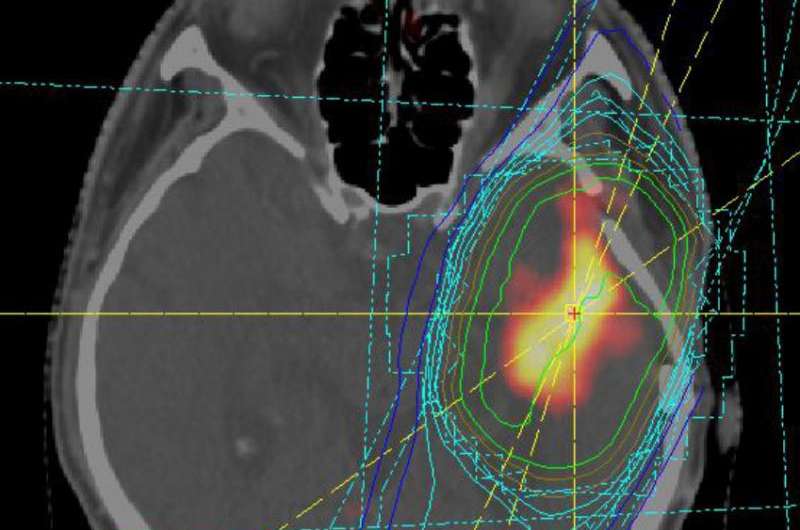microRNAs help to predict disease progression in brain tumors

Scientists at the Helmholtz Zentrum München and the Ludwig Maximilians University of Munich (LMU) have developed a new method of predicting disease progression in gliobastoma patients who have undergone standard treatment. Their findings, published in the journal Oncotarget, show that four miRNAs may hold the vital clue. An application for the corresponding patent has already been filed.
Roughly one fifth of all brain tumors diagnosed by doctors are gliobastomas. This aggressive and most common type of brain tumor continues to present doctors with huge challenges. However, molecular markers could help them to make the right treatment decision. A team of researchers led by Dr. Kristian Unger, Deputy Head of the Radiation Cytogenetics Research Unit (headed by Prof. Dr. Horst Zitzelsberger) at the Helmholtz Zentrum München, and Prof. Dr. Claus Belka, Director of the Clinic and Policlinic for Radiotherapy and Radiation Oncology at the University of Munich's Grosshadern Hospital (member of the DKTK cancer research consortium), has now succeeded in identifying specific miRNAs that could serve as biomarkers for disease progression.
miRNAs indicate a poor prognosis
In collaboration with the Institute of Neurology (Edinger Institute) at the University Hospital Frankfurt, researchers examined the composition of miRNAs in samples from 36 patients from whom tumor material had been removed during treatment, and whose subsequent course of treatment had been well documented. "We repeatedly detected four miRNAs in tumors that had a particularly poor prognosis," explains PD Dr. Karim-Maximilian Niyazi, senior physician at Grosshadern, and first author of the study. Based on their data, the scientists calculated a risk score to distinguish two patient groups who were undergoing standard treatment and whose life expectancy varied by about five months. In order to corroborate their findings, they used data obtained from a further 58 independent samples. Here, too, they found that the composition of the miRNAs altered, the worse the prospects of a successful treatment outcome were.
Patent already applied for
The scientists are confident that their observations will have more than mere theoretical implications. For this reason, they have already filed an application for the corresponding patent. "To date only few prognostic and predictive factors for glioblastoma have been identified," says research team leader Unger. "Our method could be used to identify candidates for alternative or intensified treatment options, as it is highly unlikely that patients with a high risk score would benefit from standard therapy." Since tumor tissue would generally be removed immediately, a corresponding analysis would be relatively easy to conduct and would not require any additional time or expense, the researchers note.
Whether the miRNAs have a malignant function in the cancer cells themselves or are merely an indirect marker remains to be clarified. In initial studies, however, the scientists have shown that miRNAs could possibly even play a role in various processes of tumor development.
miRNAs or microRNAs are a class of molecules that consist of short sequences of RNA building blocks. In contrast to protein synthesis, however, the RNA is not needed to build molecules. On the contrary, many miRNAs are capable of preventing the production of certain proteins by destroying the respective RNA blueprint. According to estimates, about 2,000 different miRNAs have been identified. However, this relatively young research area is continuing to bring new findings to light.
To date, only few prognostic factors for glioblastoma have been identified. The most important molecular marker, methylation of the O6-methylguanine transferase (MGMT) promoter region, has been described as a positive predictor for temozolomide-based radiochemotherapy. Up to now little research has been done into miRNA changes in glioblastomas.
More information: Michel Mittelbronn et al. A 4-miRNA signature predicts the therapeutic outcome of glioblastoma, Oncotarget (2014). DOI: 10.18632/oncotarget.9945

















